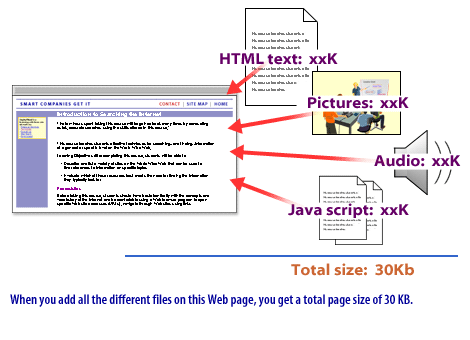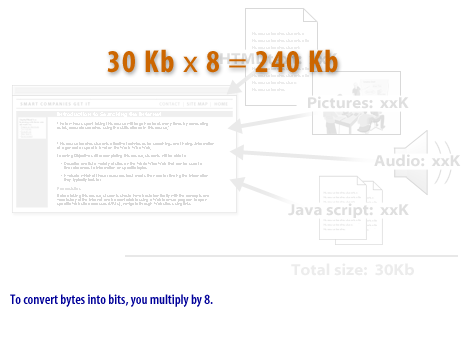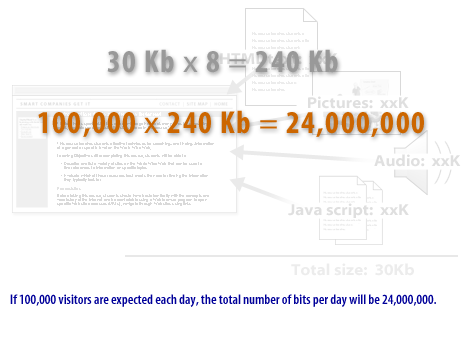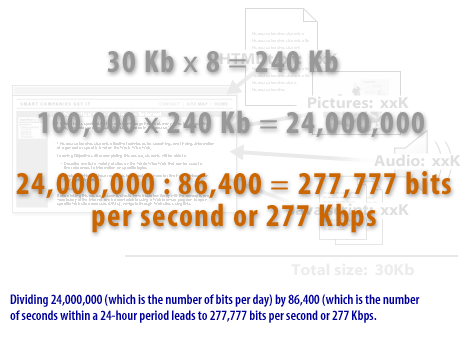| Lesson 4 | Transfer loads |
| Objective | List the Steps for Estimating the Server's Transfer Load. |
Server Transfer Load
Steps for Estimating the Server's Transfer Load
The transfer load refers to the quantity of data the server will need to transfer in order to accommodate the number of users that are likely
to download Web pages from the site. Calculating the anticipated transfer load helps identify the bandwidth requirements for the server and the site.
To calculate the bandwidth requirements for a server:
Transfer Load = (Web Page Size x 8 x Visitors) / 86,340secs
Transfer Load = (Web Page Size x 8 x Visitors) / 86,340secs
- Add the sizes, in bytes, of all the components of the Web page visited (including HTML text, images, video, audio, and JavaScript code).
- Multiply by 8 to convert bytes to bits.
- Multiply by the number of visitors expected for the Web page in a specified time (usually a 24-hour period).
- Divide by the number of seconds in the specified time period (e.g. 86,400 seconds per 24-hour period).
Be aware that this formula only calculates the AVERAGE load over a 24 hour period. Most Web sites experience peak load times whose maximum transfer load requirements should be recalculated for just that specific period (such as 6 p.m. to 8 p.m.).
The following series of images illustrates how a server'a bandwidth requirements are calculated
The following series of images illustrates how a server'a bandwidth requirements are calculated





Estimating the Server's Transfer Load
If you are launching a new site, calculating your bandwidth is difficult to determine.
The best approach is to keep careful track of your website's activity for the first few months after it goes live so you can determine your actual monthly usage, and adjust the required bandwidth accordingly. For more established sites, calculating your estimated bandwidth goes as follows:
These simple calculations should give you an idea of how much bandwidth you can expect to use, but some math is required. Basing your usage allotment solely on these rough estimates will not give you the entire picture.
- Estimate the average page size of your site, in kilobytes (KB).
- Multiply this value by the monthly average number of visitors.
- Multiply the result from step 2. by the average number of pageviews per visitor.
These simple calculations should give you an idea of how much bandwidth you can expect to use, but some math is required. Basing your usage allotment solely on these rough estimates will not give you the entire picture.
Server Response Time
Server response time measures how long it takes to load the necessary HTML to begin rendering the page from your server, subtracting out the network latency between the search engine and your server. There may be variance from one request to the next, but the differences should not be that big. Highly variable server response time may indicate an underlying performance issue and may require you to optimize CSS and Javascript.
Understanding Hardware Requirements- Quiz
Click the Quiz link below to check your understanding of server hardware.
Understanding Hardware Requirements - Quiz
Understanding Hardware Requirements - Quiz
Transfer Loads - Exercise
Click the Exercise link below to determine bandwidth requirements for Asteron.com.
Transfer Loads - Exercise
In the next lesson, you will learn about connectivity devices.
Transfer Loads - Exercise
In the next lesson, you will learn about connectivity devices.